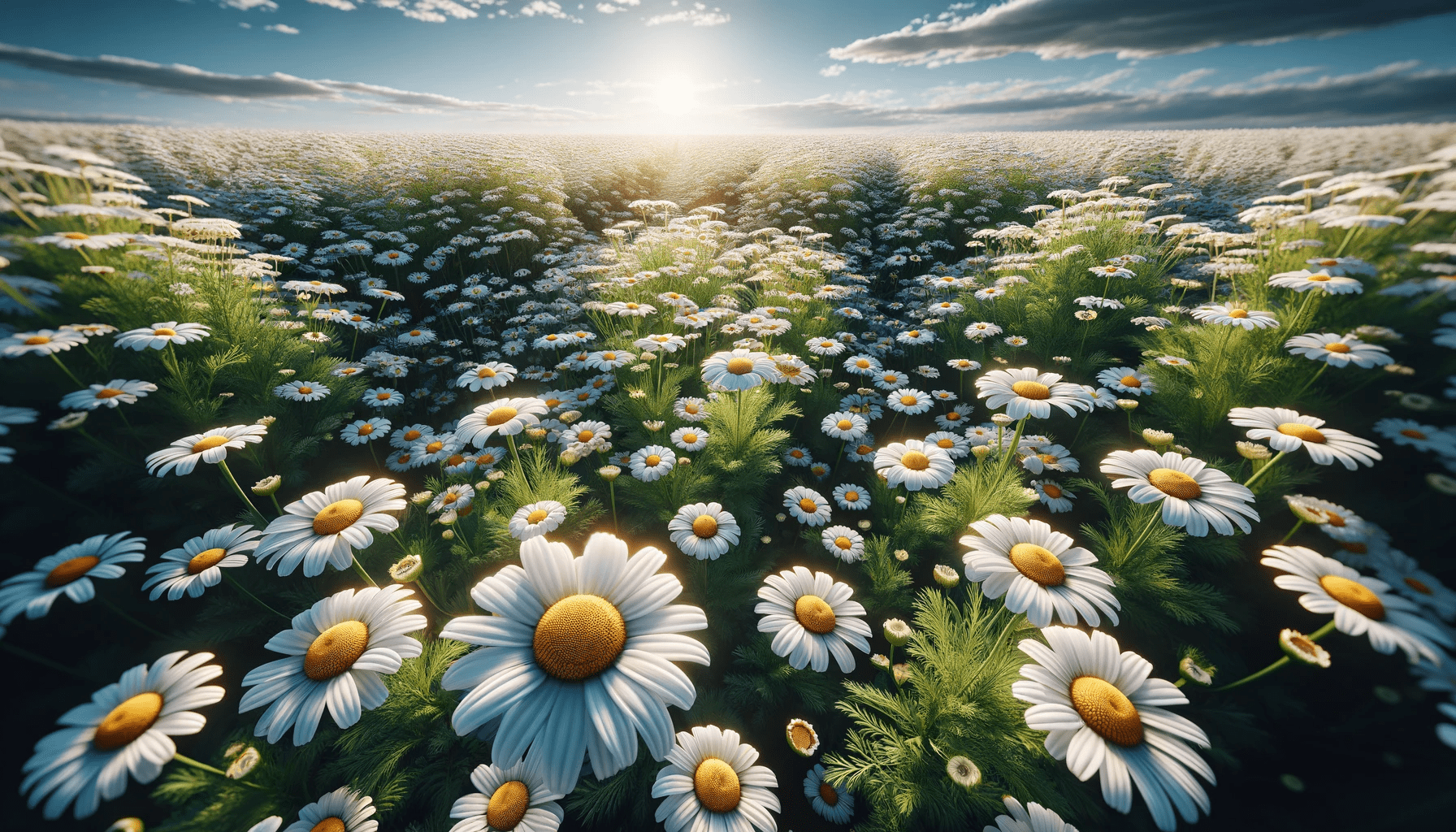Introduction
Chamomile, a daisy-like plant cherished for centuries across various cultures, is more than just a soothing tea ingredient. Known for its calming and healing properties, chamomile has been a staple in traditional medicine, with its use dating back to ancient civilizations like Egypt, Greece, and Rome.
1: What is Chamomile? Understanding the Basics
Chamomile refers to a group of plants with daisy-like flowers, belonging primarily to two types: German Chamomile (Matricaria recutita) and Roman Chamomile (Chamaemelum nobile). These herbs are renowned for their medicinal properties, with a history rooted in ancient herbalism. Chamomile has been used throughout history for its soothing properties, with records dating back to ancient Egypt where it was dedicated to their gods for curing fevers.
2: The Health Benefits of Chamomile
Chamomile is most commonly known for its calming effects, making it a popular choice for treating insomnia and anxiety. A study in "Phytomedicine" showed that chamomile extract could significantly reduce symptoms of Generalized Anxiety Disorder (GAD)【1】. Furthermore, chamomile's benefits extend to digestive health. Research in "Molecular Medicine Reports" has highlighted its role in soothing gastrointestinal disorders, thanks to its anti-inflammatory properties【2】. Additionally, chamomile has been found to possess potent antioxidant activities, which can contribute to overall health and well-being【3】.
3: Chamomile in Herbal Remedies and Teas
Chamomile tea is a worldwide favorite for promoting relaxation and sleep. The calming properties of chamomile tea have been supported by research, including a study in "The Journal of Clinical Pharmacology" which suggests potential benefits in improving sleep quality and mood【4】. Chamomile tea can be made simply by steeping dried chamomile flowers in hot water. It's also commonly blended with other herbs like mint or lavender to enhance flavor and therapeutic benefits.
4: Chamomile in Skincare and Beauty Products
Due to its anti-inflammatory and soothing properties, chamomile is a popular ingredient in skincare products. A study in the "Journal of Dermatological Treatment" reported the effectiveness of chamomile in treating inflammatory skin conditions, making it a valuable ingredient in creams and lotions【5】. Homemade skincare recipes often include chamomile for its gentle, soothing effects on the skin.
5: Growing and Harvesting Your Own Chamomile
Growing chamomile can be a rewarding endeavor. It thrives in well-drained soil with plenty of sunlight. The University of Maryland Extension provides detailed guidance on cultivating chamomile, emphasizing the importance of proper care for optimal growth【6】. The flowers are best harvested when they are fully open, typically on a dry day to preserve their essential oils, and can be dried for long-term storage.
6: Chamomile in Aromatherapy and Relaxation Techniques
Chamomile is also utilized in aromatherapy. Its essential oil is extracted from the flowers and is known for its calming and sedative properties. A study in "Evidence-Based Complementary and Alternative Medicine" discusses how chamomile essential oil can be used in aromatherapy to aid in relaxation and improve sleep quality【7】.
Conclusion
Chamomile's versatility and multitude of benefits make it a timeless and valuable herb in both traditional and modern contexts. From soothing teas to skincare and aromatherapy, chamomile continues to be a go-to natural remedy for promoting relaxation, health, and well-being.
References
- Amsterdam, J. D., et al. (2009). "A Randomized, Double-Blind, Placebo-Controlled Trial of Oral Matricaria Recutita (Chamomile) Extract Therapy for Generalized Anxiety Disorder." Phytomedicine.
- Srivastava, J. K., et al. (2010). "Chamomile: A herbal medicine of the past with a bright future." Molecular Medicine Reports.
- Gould, L., et al. (2014). "Chamomile and anti-inflammatory activity." Life Sciences.
- Keefe, J. R., et al. (2016). "Chamomile (Matricaria recutita) may provide antidepressant activity in anxious, depressed humans: an exploratory study." The Journal of Clinical Pharmacology.
- Patzelt-Wenczler, R., et al. (2000). "Proof of efficacy of Kamillosan® cream in atopic eczema." Journal of Dermatological Treatment.
- University of Maryland Extension. "Growing Chamomile."
- Srivastava, J. K., et al. (2010). "Chamomile: A herbal medicine of the past with bright future." Evidence-Based Complementary and Alternative Medicine.
Discover Chamomile on the Amazon store : link

Leave a comment